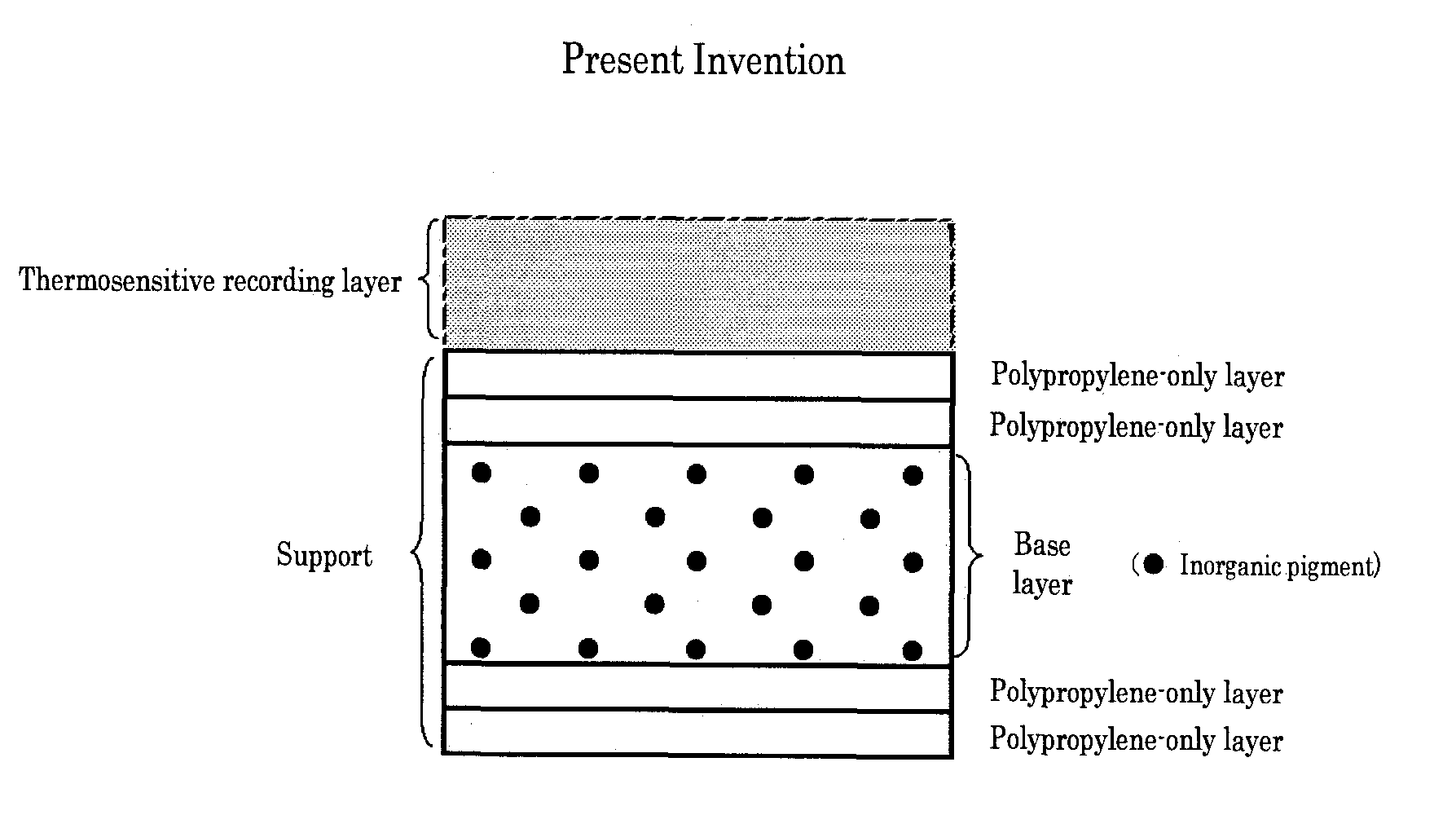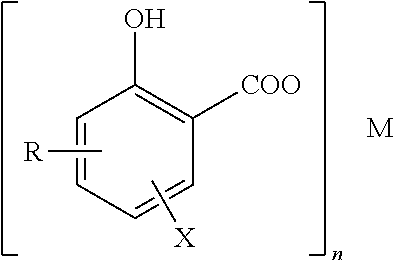Thermosensitive recording material
a technology of recording material and film, applied in thermography, duplicating/marking methods, printing, etc., can solve the problems of film curling, film lifting, and insufficient methods to prevent curling, so as to reduce the curling of film
- Summary
- Abstract
- Description
- Claims
- Application Information
AI Technical Summary
Benefits of technology
Problems solved by technology
Method used
Image
Examples
example 1
[0115]A recording layer coating solution was prepared by pulverizing and dispersing the following composition so as to have an average particle diameter of 0.3 μm, with the use of a ball mill.
[0116]
[A solution]2-anilino-3-methyl-6-diethylaminofluoran2 partsOctadecylphosphonic acid6 partsPolyvinyl butyral (DENKA BUTYRAL #3000-2, produced by3 partsDenki Kagaku Kogyo Kabushiki Kaisha)Toluene22 parts Methyl ethyl ketone22 parts
[0117]The coating solution [A solution] prepared as described above was applied onto a biaxially-stretched polypropylene film (support) (FGS-200, produced by YUPO CORPORATION) having a thickness of 200 μm and dried at 70° C. for 1 min, and a thermosensitive recording layer having a thickness of 11 μm was thus formed.
[0118]Next, a [B Solution] was prepared by mixing the following composition.
[0119]
[B solution]Guanamine-formaldehyde copolymer particles (EPOSTAR1partS, which has an average particle diameter of 0.3 μm,produced by Nippon Shokubai Co., Ltd.)Silicone-mo...
example 2
[0123]A recording material of the present invention was obtained in a manner similar to the process of obtaining the one in Example 1, except that the back layer coating solution was changed to a [D solution] having the following composition.
[0124]
[D solution]Isobutylene-maleic anhydride copolymer ammonium salt48parts(ISOBAN 304 ammonia, which has a solid content of 21%,produced by Kuraray Co., Ltd.)Polystyrene sulfonic acid ammonium salt (CHEMISTAT9partsSA-101, which has a solid content of 30%, producedby Sanyo Chemical Industries, Ltd.)2,2-bis(hydroxymethyl)butanoltris[3-(1-aziridinyl)propionate]1part(CHEMITITE PZ-33, produced by NipponShokubai Co., Ltd.)Water83parts
example 3
[0125]A recording material of the present invention was obtained in a manner similar to the process of obtaining the one in Example 1, except that the back layer coating solution was changed to an [E solution] having the following composition.
[0126]
[E solution]Isobutylene-maleic anhydride copolymer ammonium salt48parts(ISOBAN 304 ammonia, which has a solid content of 21%,produced by Kuraray Co., Ltd.)Na salt of a copolymer of styrene sulfonic acid and maleic3partsacid (VERSA TL-3, which has a solid content of 100%,produced by Nippon NSC Ltd.)2,2-bis(hydroxymethyl)butanoltris[3-(1-aziridinyl)propionate]1part(CHEMITITE PZ-33, produced by NipponShokubai Co., Ltd.)Water89parts
PUM
| Property | Measurement | Unit |
|---|---|---|
| volume average particle diameter | aaaaa | aaaaa |
| volume average particle diameter | aaaaa | aaaaa |
| volume average particle diameter | aaaaa | aaaaa |
Abstract
Description
Claims
Application Information
 Login to View More
Login to View More - R&D
- Intellectual Property
- Life Sciences
- Materials
- Tech Scout
- Unparalleled Data Quality
- Higher Quality Content
- 60% Fewer Hallucinations
Browse by: Latest US Patents, China's latest patents, Technical Efficacy Thesaurus, Application Domain, Technology Topic, Popular Technical Reports.
© 2025 PatSnap. All rights reserved.Legal|Privacy policy|Modern Slavery Act Transparency Statement|Sitemap|About US| Contact US: help@patsnap.com



